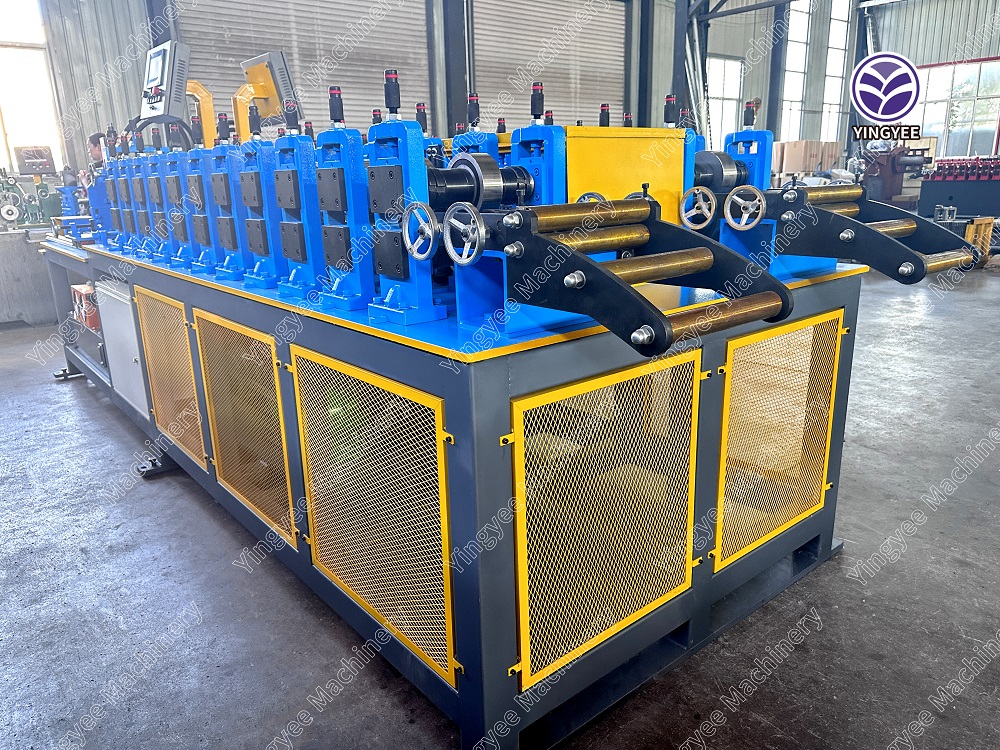
Understanding Sheet Metal Forming Machines Techniques and Applications
Sheet metal forming is a vital process in various industries, including automotive, aerospace, and construction. It involves converting flat sheets of metal into desired shapes using specialized machines. These machines utilize various techniques, ensuring precision and efficiency in manufacturing. This article explores the fundamental principles of sheet metal forming machines, their types, and applications, while highlighting their significance in modern manufacturing.
What is Sheet Metal Forming?
Sheet metal forming refers to a collection of processes used to shape and manipulate metal sheets into functional parts or components. The methods typically used include bending, stretching, and stamping, which can produce a wide range of shapes and sizes to meet specific design requirements. The process often begins with selecting the appropriate sheet metal, typically aluminum, steel, or copper, based on the application requirements.
Types of Sheet Metal Forming Machines
There are several types of machines used in sheet metal forming, each tailored for specific applications. Here are some of the most common types
1. Press Brake Machines These machines are used to bend sheet metal into specific angles and shapes. The press brake applies force using a punch and die system, allowing for intricate designs and precise angles. The versatility of press brakes makes them suitable for various applications, from simple bends to complex geometries.
2. Stamping Machines Stamping involves pressing a die into the sheet metal to cut, shape, or form it. Stamping machines can produce large quantities of parts quickly and are commonly used in the automotive industry to create body panels, chassis components, and brackets.
3. Laser Cutting Machines Leveraging laser technology, these machines offer a high level of precision when cutting sheet metal into intricate designs. Laser cutting is beneficial for applications requiring high precision and minimal material wastage.
4. Punching Machines These machines use a punch to create holes or shapes in the metal sheet, commonly used to create features like ventilation openings or mounting holes. Punching can be used for both one-off projects and high-volume production runs.
5. Roll Forming Machines Roll forming is a continuous bending operation in which a long strip of metal is passed through consecutive pairs of rolls. This method is ideal for producing long sections of metal with consistent cross-sectional profiles, such as channels, tracks, and roofing sheets.

6. Hydraulic Presses Hydraulic presses are versatile machines capable of shaping, bending, and forming metals under high pressure. They can be equipped with various dies to perform different operations, making them suitable for diverse metalworking applications.
Applications of Sheet Metal Forming Machines
Sheet metal forming machines find applications across multiple industries due to their efficiency and precision. Some common uses include
- Automotive Industry Vehicles require numerous components made from sheet metal. Press brakes and stamping machines play a crucial role in producing body panels, frames, and interior parts.
- Aerospace The aerospace sector demands high-performance components that often require complex geometries and lightweight materials. Sheet metal forming is used to create fuselage skins, wing structures, and engine components.
- Construction From roofing to structural elements, sheet metal forming machines are used to create a variety of building components such as gutters, downspouts, and cladding.
- Electronics Many electronic devices housed in metal casings require precise cutouts and shapes, making laser cutting and punching invaluable in this industry.
- Appliances Household appliances, including refrigerators, washing machines, and ovens, utilize sheet metal forming for enclosures and internal components.
Conclusion
Sheet metal forming machines are indispensable in modern manufacturing, enabling the efficient production of a wide variety of components across different industries. With advancements in technology, these machines continue to evolve, becoming more precise, versatile, and eco-friendly. Understanding the various types of sheet metal forming machines and their applications is crucial for manufacturers aiming to maximize productivity while creating high-quality products. As industries continue to innovate, the role of sheet metal forming will remain significant, paving the way for a more sophisticated manufacturing landscape.